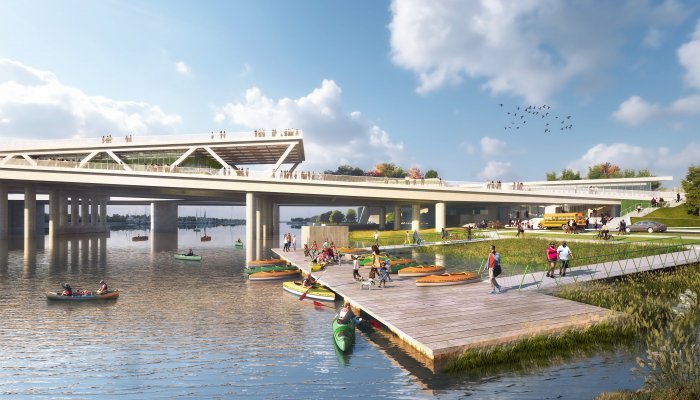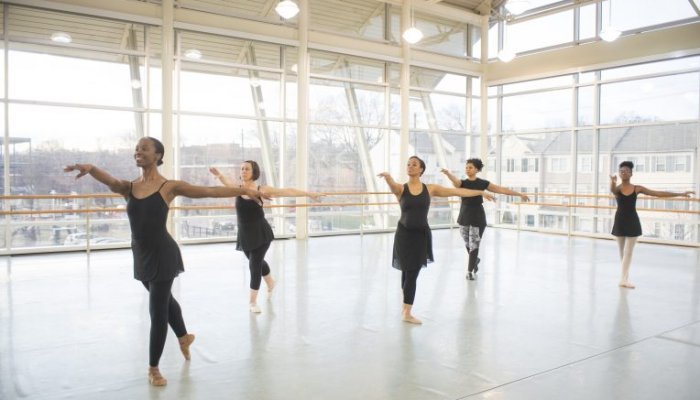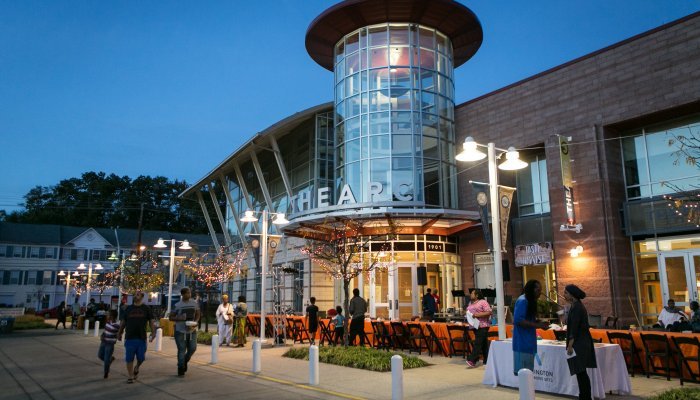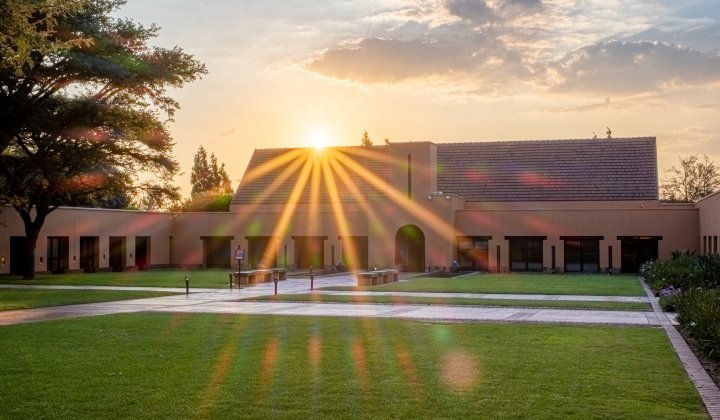To Scott Kratz, senior vice-president of Building Bridges Across the River (BBAR) and director of the soon-to-be-built 11th Street Bridge Park in Washington, DC, humane leadership comes down to three things: trust, intentionality, and cooperation. I’m meeting Kratz and his co-vice-President, Lynnita Jones-Morton, at BBAR’s THEARC (an acronym for Town Hall, Education, Arts and Recreation Campus) in DC’s Shipley neighbourhood to learn more about the work they do, of which the much-anticipated 11th Street Bridge Park – a few kilometres away on the Anacostia River – is only a small part.
How it started
I have to strain to hear Kratz’ pearls of wisdom. Outside in the parking lot, construction vehicles are ripping up tarmac to place the foundation for the new Washington School for Girls, slated to open at THEARC in 2025. Kratz points out that once the school is finished, THEARC’s total footprint will be 21 650m2. In 1996, it was 930m2. “Back in the 90s, the developer Chris Smith purchased the buildings here from the Cafritz family. This was at the tail end of the drug epidemic here in DC.” Kratz explains. “There was a real lack of investment. Chris realised there was more opportunity here, so we started a conversation about building a larger facility and co-locating best-in-class non-profits on one campus, and that was the birth of THEARC.”
Kratz points out that there was already an active social network on the ground in the neighbourhood before THEARC. Community leaders from Shipley and further afield would meet ad hoc in church basements on the weekends to discuss neighbourhood initiatives. THEARC just helped to pull it together by providing the facilities, infrastructure, and funding to get even more work done. “Partnership takes a lot of time and resources. BBAR raised the first $27 million to build this building, then raised another $33 million to build the West building and now we’ve raised the money to build this new school,” Kratz says, gesturing to the activity outside. This leveraging of and integration with existing community initiatives and business and social leaders is a crucial element of BBAR and THEARC’s style of humane leadership. It’s helped to build important trust.
What is THEARC?
THEARC, I learn during our tour, is like a village: everyone is invested in the same outcome and shares the same space, so they all pull in the same direction (the indispensable cooperation that Kratz refers to). Fourteen nonprofits call the campus home, and there are a total of four schools here (the Washington School for Girls being only one). The prestigious Washington Ballet and the Levine School of Music have satellite spaces at THEARC, utilising an impressive 365-seat state-of-the-art theatre designed by Septime Webre that’s open seven days a week. Last year saw more than 290 events take place within this space, and during the summer months, students can learn technical skills such as sound engineering and lighting through the THEARC Theatre I-CAN Program.
The Children’s National Medical Centre at THEARC provides crucial care for young families that would normally have to travel across the Anacostia River to access primary care and less than 3km away, the Skyland Workforce Centre offers free hospitality and construction skills training to DC residents who are seeking employment in these important economic sectors.
It will be Skyland graduates working on the 11th Street Bridge Park when ground is broken later this year. The THEARC food farm on the bank of Oxon Creek is where kids and adults can learn how to grow fresh produce and inoculate logs with Shitake and Chestnut mushroom mycelium. This verdant space is a breath of fresh air in a neighbourhood characterised by dense, sprawling housing developments.
Before Kratz and Jones lead me outside to get a closer look at the food garden, we head upstairs to a beautiful, double-volume performing-arts space flooded with natural light falling through expansive floor-to-ceiling glass windows. At night, the warm glow from these windows is a beacon of hope in a neighbourhood that wrestles with the social ills of crime, drug abuse, violence, and lack of quality educational and nutritional resources.
Why THEARC and BBAR are important
To understand the role that THEARC (and soon the 11th Street Bridge Park) plays in its community, you have to understand DC’s wards. The District of Columbia’s eight wards divide the federal city into separate legislative and administrative areas, all of which are characterised by their own distinct social, economic, and political character and history. Wards 7 and 8, where THEARC and the Skyland Workforce Center are sited, and where shortly the 11th Street Bridge Park will be built, have historically been the most under-served. Poor and insufficient schooling, lack of access to fresh and healthy food, ageing infrastructure, and a dearth of healthcare options still plague what are DC’s most populous wards, but as the priorities of the city government under current mayor Muriel Bowser change, these majority African-American areas are witnessing a rising tide of change.
Kratz, Jones-Morton, and the team of people working with them are at the coalface of this transformation, and have met challenges and criticism with a style of leadership characterised by intentionality, humility, and a willingness to learn and connect.
“We need to move beyond the scarcity mindset. We’re not fighting over the same small slice of pie. We need to make the pie bigger,” Kratz argues. “We’ve had great success in partners coming together because we can then go after larger pools of funding.”
As she guides us through THEARC’s food gardens at the end of our tour, Jones-Morton agrees with Kratz. “If leadership isn’t open to people coming in with new ideas, it won’t work,” she says. “At BBAR, we’re open to new ideas.” Jones-Morton steps away to take an urgent call. She’s preoccupied with finding new parking spaces to make up for those that are being taken by the new school. THEARC is growing in leaps and bounds as it inflates to keep up with community demand. It’s a nice problem to have, really.
The 11th Street Bridge Park
When it’s finished next year, BBAR’s 11th Street Bridge Park will be a physical manifestation of the work that Kratz, Jones-Morton, and the BBAR team have spent the last 13 years doing at THEARC. It will include an environmental education centre, an art gallery, hammock grove, restaurant, canoe launch, and a 250-seater outdoor amphitheatre.
Designed by the architectural and landscape design firms OMA+OLIN, every aspect of the design, from the effect of sound from the park on the nearby neighbourhood of Historic Anacostia to how the structure communicates the rich history of the Anacostia River, is the result of more than 200 meetings over more than 10 years with community and business leaders, neighbours, city officials, and the people who use Anacostia Park every day.
“The Bridge Park is emblematic of our approach,” Kratz says. “We’ve invested over $92 million through our equitable development work, which is more than what it’s going to cost to build the Park. Making these deep investments in the community is critical.”
Half of the cost of building the Bridge Park is coming from the city, while the rest is being raised by BBAR, and they’ve almost hit their target.
Taking responsibility
Kratz and BBAR have faced tough questions about gentrification and the threat of displacing ward 7 and 8 legacy residents when the Bridge Park is up and running. As neighbourhoods transform, they often see an influx of new businesses and investment, which pushes up property values and consequently taxes (New York’s High Line is a prime example).
Because BBAR acknowledges the low rate of home ownership east of the Anacostia River and the tenuous position of many residents there, they offer a monthly Home Buyers Club meeting for ward 8; teaching the skills of home-buying and making use of funding to offer $2 500 in closing cost assistance grants.
A schedule of regular, community-focused events each year also helps to position BBAR as a partner with the greater good in mind. The Anacostia River Festival every Spring is one of these events, where residents can learn about the 11th Street Bridge Park, and many other BBAR events and activations, including the Spring Fling and the Taste of the Harvest Festival in Autumn. This public visibility is critically important. “Trust is about shared experiences over time,” Kratz says.
BBAR’s tips for sustainable development and humane leadership
- Regular stakeholder engagement meetings happen once a month on a Friday at THEARC. NPOs come together to identify opportunities, brainstorm and collaborate.
- Having all NPOs located in one place means that they are better able to pool resources. Facilitators can be shared between institutions and work spaces at THEARC that have purposely been built to be multi-purpose, so that they can be used by different organisations as the need arises.
- THEARC encourages partner NPOs to sign long-term leases as a commitment to transforming the community, Kratz says. “There’s a lot of impermanence here. Having long-term leases helps with that. They’re not paying rent. They just pay their operational costs.”
- THEARC and its partner NPOs focus on serving the needs of the surrounding community first. They do this by being nimble and recognising that communities are constantly changing, so the BBAR business model needs to be flexible. Kratz tells me that Howard University Hospital nearby in ward 1 will soon offer free mental health sessions to local residents from a space at THEARC. “That probably wasn’t part of the original design of BBAR, but when there’s a need in the community, we try to solve it using our partners and resources.”
Learn more about BBAR, THEARC and the 11th Street Bridge Park on their website, www.buildingbridgesdc.org.









